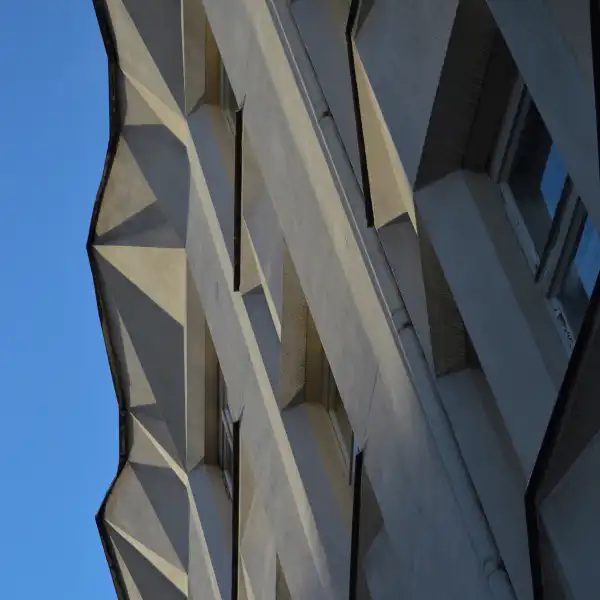Garden route
The grass is always greener on the other side.
What would Prague be like without greenery? And how would its architecture resonate? Many experts and laypeople agree that the green slopes and parks give Prague its unmistakable character. Simply put, it is a city where architecture works harmoniously with nature. The best combination of both and undeniable proof of this phenomenon are the gardens and parks around Malá Strana and Hradčany. These gardens have accompanied Prague since its founding and have taken on the functions and characters of the buildings to which they belonged, from grand palaces with neatly trimmed hedges to grassy nooks of English parks. The gardens of Malá Strana and Hradčany represent one of the jewels of old Prague and an inseparable part of its historical heritage. They are a source of pride and joy and represent an ideal place for us to relax, which may seem like a small piece of paradise on earth.

Duration:
1h 20 min
Number of stops:
8 + 4
Lenght:
6,7 km
MHD start:
Pohořelec
MHD end:
Hellichova
Garden of Černín Palace
The garden of the largest Baroque palace in Prague, the Černín Palace, is the work of prominent Baroque architects such as Francesco Caratti, Domenico Rossi, and František Maxmilián Kaňka. Initially, a Baroque garden was built at the end of the 17th century. Still, it transformed in the 19th century and took on the appearance of an English park. It is divided into two elevation levels, featuring the dominant northern façade of the palace and a statue of Hercules battling the Hydra by the sculptor Ignác František Plázer. A cascading pool, shaped boxwoods, and floral borders complement the space. The Černín Palace itself, built for Humprecht Jan Černín of Chudenice, is a pinnacle of Baroque architecture with strong influences from Italian architecture. After establishing the First Republic, it was decided that the palace would house the Ministry of Foreign Affairs. To realize this intention, a demanding reconstruction and expansion of the palace were necessary, carried out by architect Pavel Janák from 1929 to 1934. The garden also received a new look thanks to landscape architect Otokar Fierlinger, who worked on the restoration of the garden in 1929, including the restoration of the original Baroque fountains, thus returning it to its former glory.
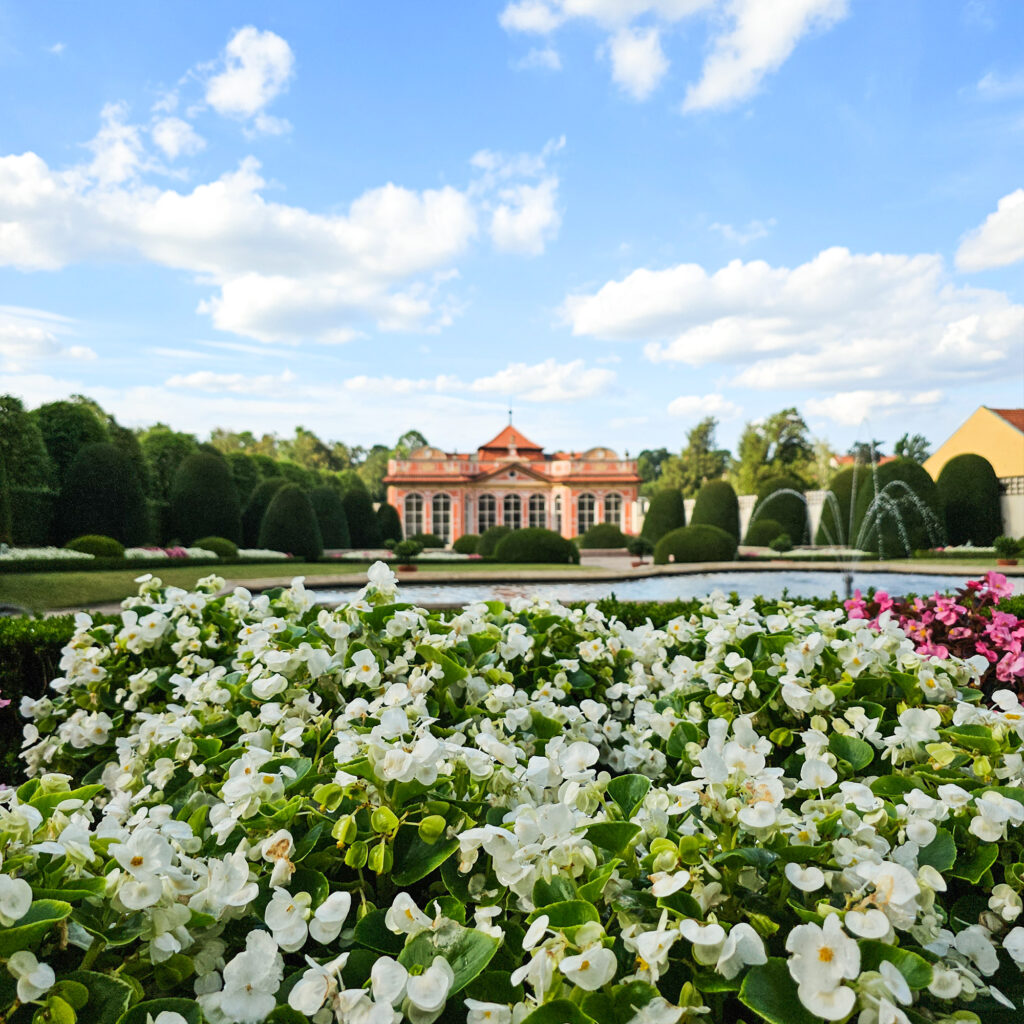
The Stag Moat
The Stag Moat, a surprising piece of wilderness in the immediate vicinity of Prague Castle, holds a significant historical value. This natural ravine, which now resembles a green oasis filled with mature trees, was left bare for many centuries for the defensive purposes of the Castle. It was in the 16th century that the moat was filled with grapevines, and the first bridge was built over it, connecting the Castle with the newly constructed Royal Garden. The valley of the Brusnice stream got its name only during the reign of Rudolf II, who had a wild game released into the ravine for hunting. Deer and roe deer remained in the valley until 1742, when they were exterminated by the French besieging Prague. In the 20th century, wild animals returned to the ravine thanks to T. G. Masaryk, who placed bears brought by soldiers from Russia in the upper part of the valley. At Masaryk’s request, a lookout was also created above the moat, where the president enjoyed sitting in the shade of a large linden tree. The moat was fully opened to the public only after 1990 when Václav Havel moved into the house above the valley. With the help of architect Josef Pleskot, who designed a system of wooden walkways and an elegant oval passage through the rampart of the Powder Bridge, this unique “wilderness” in the city centre was made accessible to the public. During Miloš Zeman’s presidential term, the moat was closed, but today it is once again open to all who wish to explore its corners.
![Úvodní Jelení Příkop 4[1]](https://mapamatky.cz/wp-content/uploads/2024/08/Uvodni_Jeleni_prikop_41-1024x1024.jpg)
Royal Garden
The Royal Garden, one of the many ornamental gardens of Prague Castle, is a sight to behold. It is the oldest and largest of the gardens, and it played a significant role in the transformation of Prague Castle from a medieval fortress to a Renaissance residence in the 16th century. The garden was created on the site of former vineyards purchased from the townspeople of Malá Strana by Ferdinand I of Habsburg. It quickly gained fame for its botanical and exotic rarities, including the tulip, first cultivated here in Europe.
In addition to its flora, the garden is a showcase for architecture and sculpture. The famous Summer Palace of Queen Anne is often regarded as one of the most beautiful Renaissance buildings north of the Alps. The design of the Summer Palace, with its arcaded walkway surrounding the entire structure, was considered innovative even in Italy at that time, where Tycho de Brahe and Johannes Kepler later observed stars.
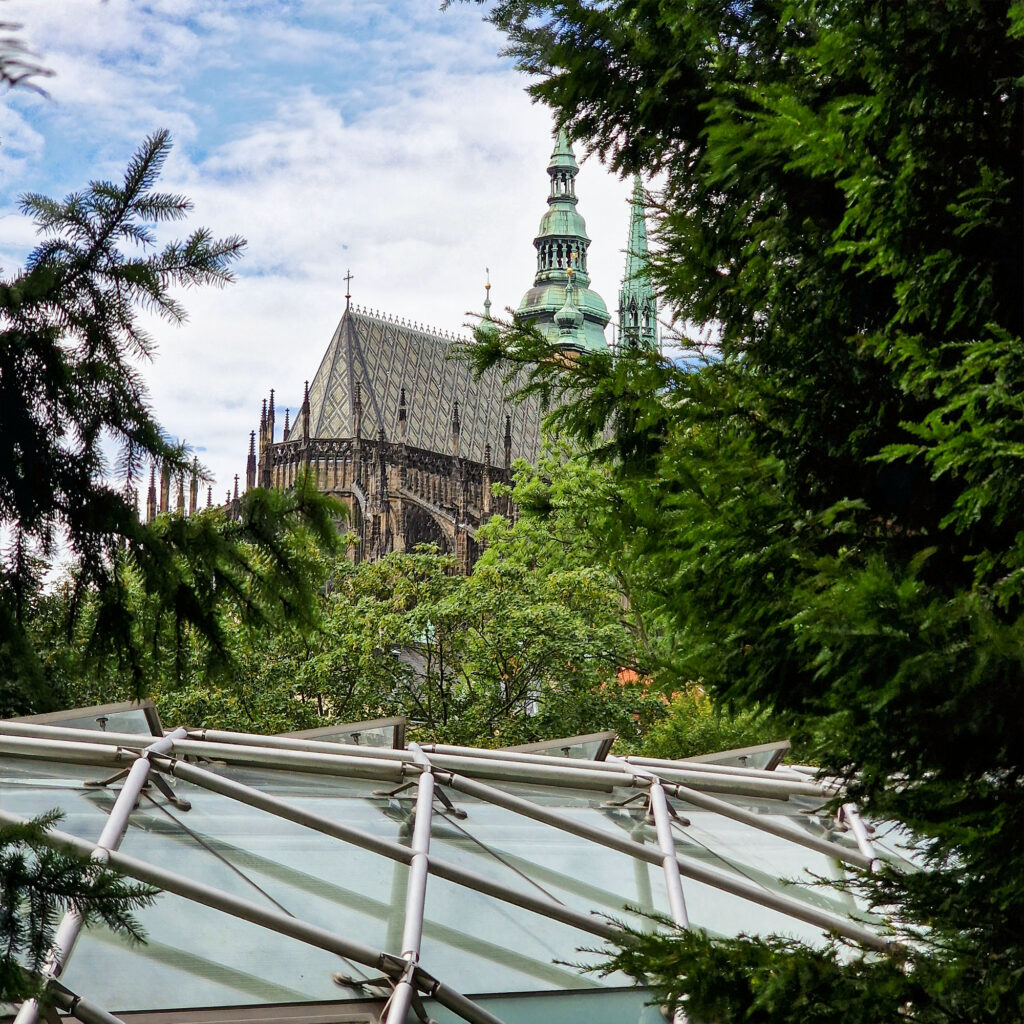
Southern Gardens
In front of the line of castle towers and palaces, where only the battlements of massive walls stood for centuries, today lies a garden complex known collectively as the Southern Gardens. Two of the three gardens bear the distinctive and unmistakable mark of Slovenian architect Jože Plečnik, the castle architect from the era of President Masaryk. He began his work at the Castle in the so-called Paradise Garden, whose austere appearance is accentuated by two grand gestures typical of Plečnik: a monumental entrance staircase and a giant bowl made of Mrákotín granite that seems to levitate above the greenish lawn.
Under the weight of this monumentality, we should not overlook Matthias Pavilion at the end of the garden, a remnant from the Baroque era, complemented by a sculpture by Josef Kalvoda. Following a row of trimmed hornbeams, the Garden on the Ramparts seamlessly continues, where Plečnik added small pavilions and an impressive semicircular lookout with a limestone pyramid referencing ancient Rome among its centuries-old trees.
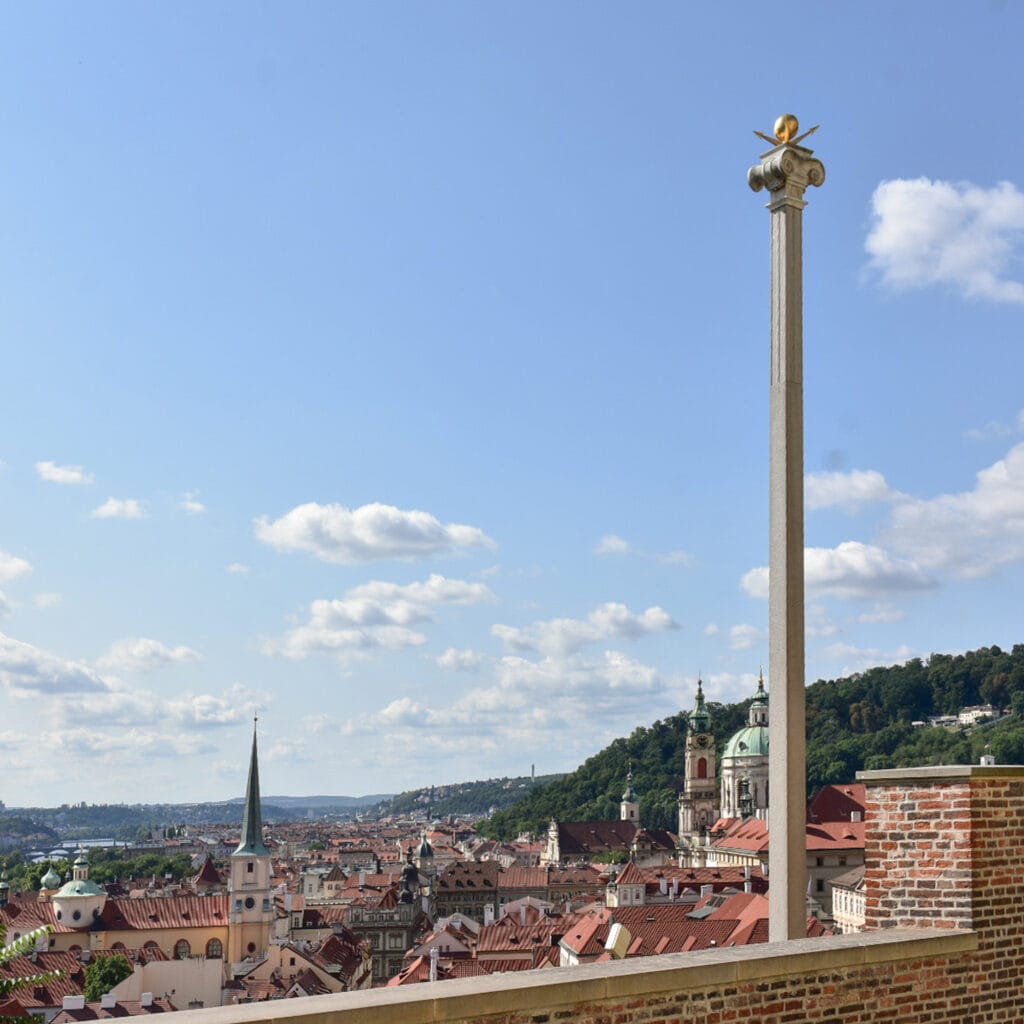
Gardens under Prague Castle
The southern slope of Prague Castle is home to unique Baroque gardens that serve as representative and relaxing spaces for the owners of the palaces around Valdštejnská Street. The exposed hillside beneath the medieval fortifications originally lay empty, which was crucial for defensive reasons. Over time, however, vineyards began to emerge here, and in the 16th century, the first gardens were established. A turning point occurred during the Thirty Years’ War when Swedish troops devastated Prague, and the originally Renaissance-style gardens were replaced with newly built cascading gardens in opulent Baroque style.
Especially in the 18th century, magnificent urban palaces of wealthy nobility arose beneath the monarch’s residence, accompanied by visually pleasing gardens full of decorative summer houses, celebratory gloriettes, oval staircases, and sculpturally adorned fountains. Today, this interconnected complex consists of six parts. The individual gardens are named after the palaces beside which they were created. However, these are not original names, as the palace owners often changed throughout the 19th century. Today, they are known as the Ledebour Garden, the Small Pálffy Garden, the Large Pálffy Garden, the Small Fürstenberg Garden, the Large Fürstenberg Garden, and the Kolovrat Garden, with the first four mentioned being accessible to the public.

Valdštejn Garden
Albrecht von Wallenstein, an outstanding military leader, skilful politician, and great businessman, is one of the few significant Czech figures in European history. Apart from his political legacies, the imperial army’s generalissimo also left behind an early Baroque residence in Prague that remains unparalleled. The vast complex was built on the site of 25 original houses, a fortified gate, and several gardens. Wallenstein began acquiring these properties right after the Battle of White Mountain in 1621, and just eight years later, a palace stood in Malá Strana, intended to rival Prague Castle.
The palace is complemented by a garden that can be conceptually divided into two parts. The first is dominated by a colossal three-arched sala terrena, whose decoration connects with the palace’s interior, making it a seamless part of the overall design. The ceiling frescoes, like the sculptural decorations in the garden by sculptor Adrian de Vries, are inspired by ancient mythology. In contrast to the frescoes, however, the sculptures are merely copies since Swedish soldiers plundered the palace in 1648, taking away the free-standing statues and the original fountains.
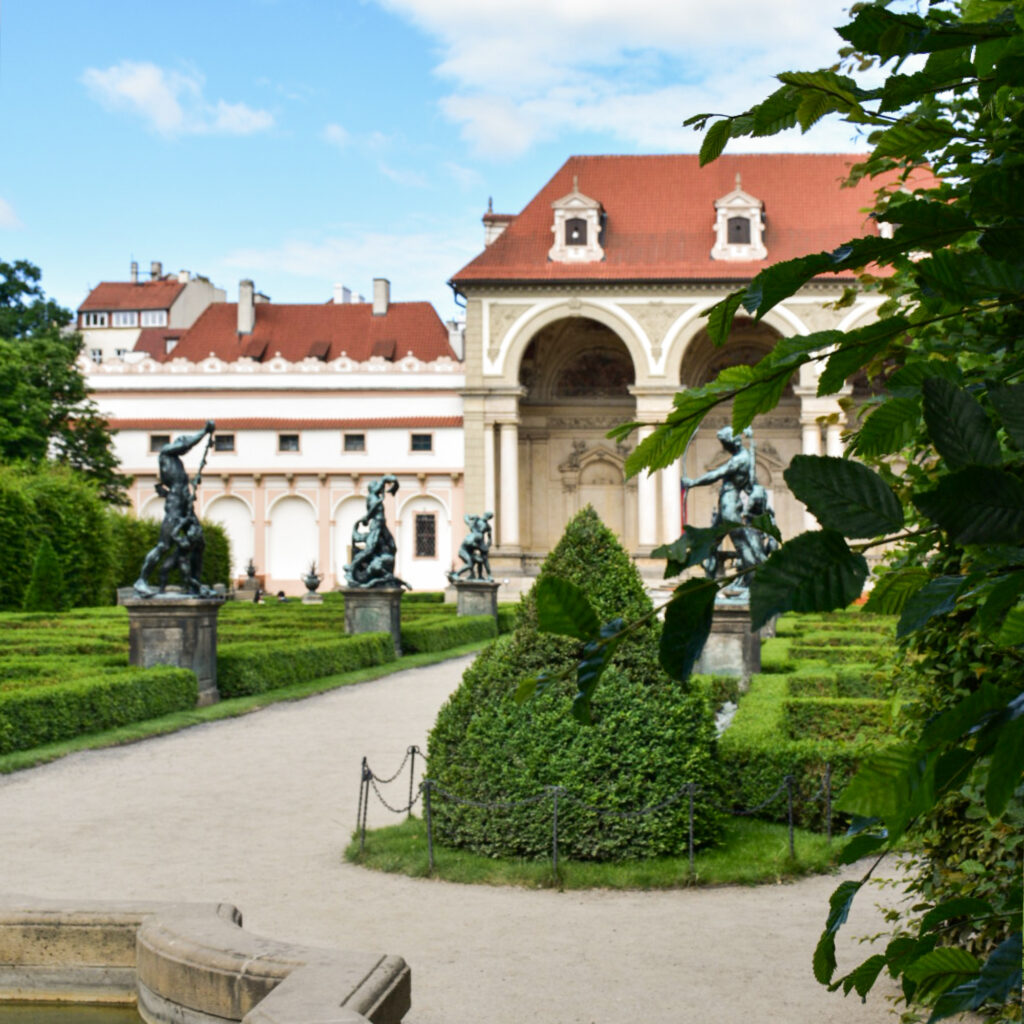
Vojanovy Sady / Vojan Gardens
If you are a discerning visitor looking for a space to relax, complete with a playground, water features, plenty of greenery, and absolute tranquillity, Vojanovy Sady is the perfect place for you. These gardens acquired their peaceful character in the 17th century when Emperor Ferdinand III purchased part of the area and established a monastery for the Order of Discalced Carmelites. The monastic sisters surrounded the entire garden with a high wall featuring niches, which included the chapel of St. John of Nepomuk.
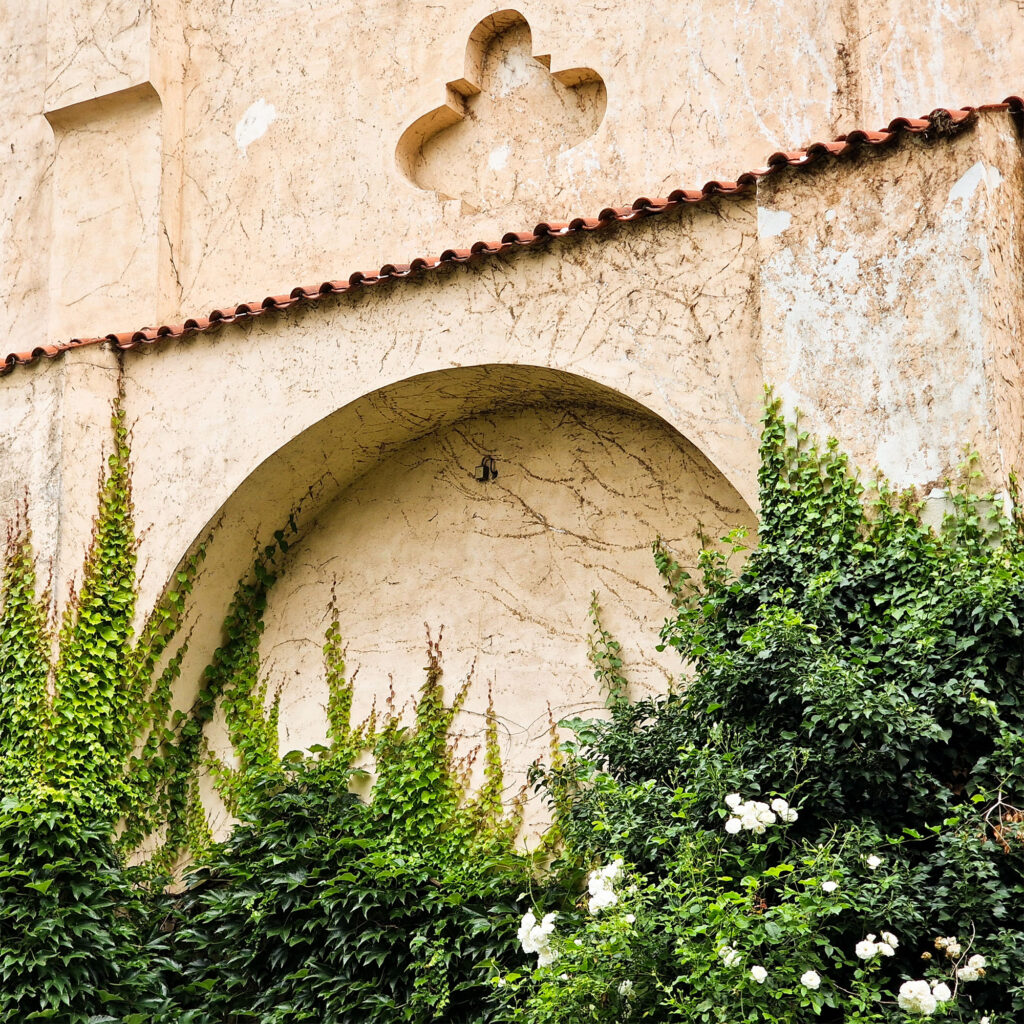
Garden Vrtbovská
Stairs, retaining walls of the sloping terrain, terraced levels, and intimate corners of abstract chambers with benches hidden behind green walls of shaped bosquets—this is Vrtbovská garden, often referred to as the most beautiful of Prague’s gardens. This baronial treasure, connected to the lesser-known Vrtbovský Palace, has been a part of the picturesque Malá Strana since 1720. The architectural design was created by the renowned architect František Maxmilián Kaňka at the request of the then-owner, Jan Josef von Vrtba.
To decorate the garden, F. M. Kaňka enlisted other famous artists of his time, including sculptor Matyáš Bernard Braun and painter Václav Vavřinec Reiner. While Braun’s sculptures are spread throughout the garden, Reiner’s frescoes can only be seen in the interior of the sala terrena on the lowest level of the garden. Like the second level, this level is adorned with embroidery motifs or ornamental flower beds.
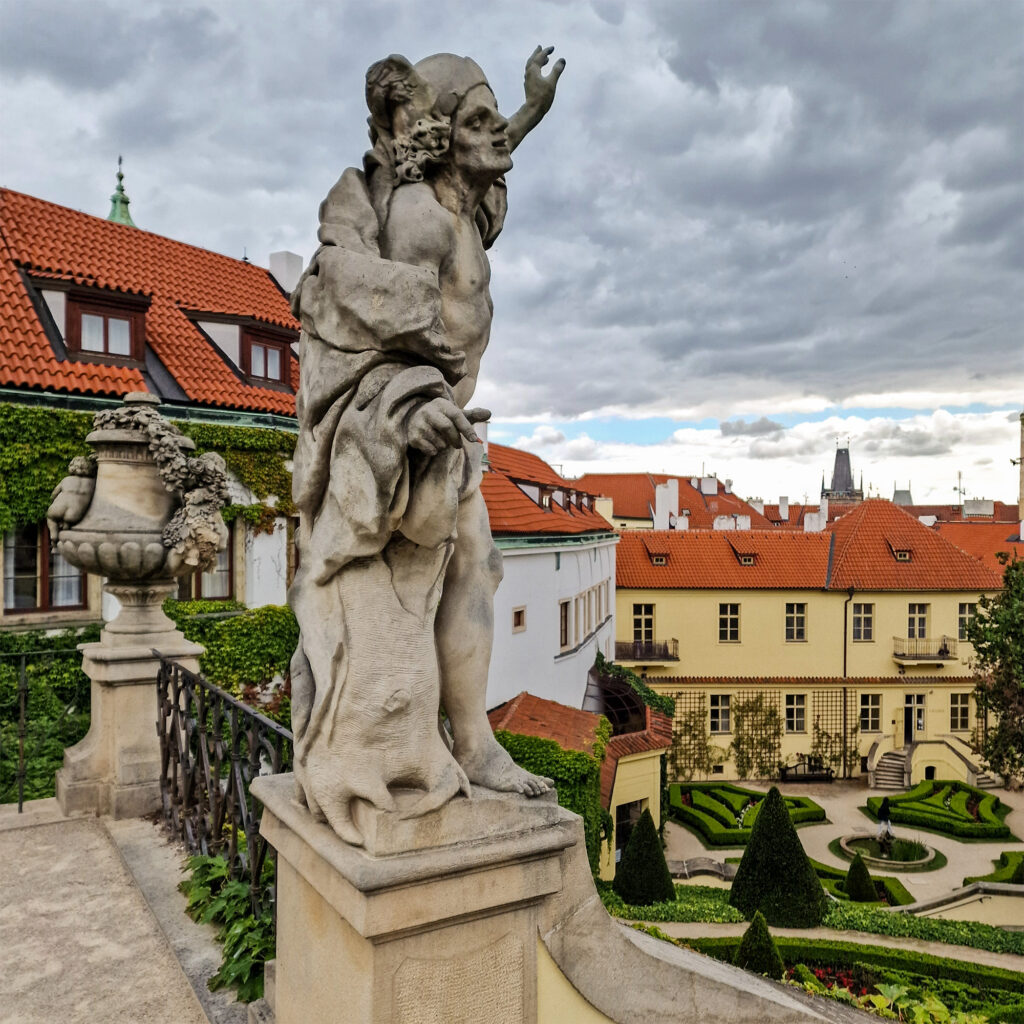
Zastávky mimo trasu
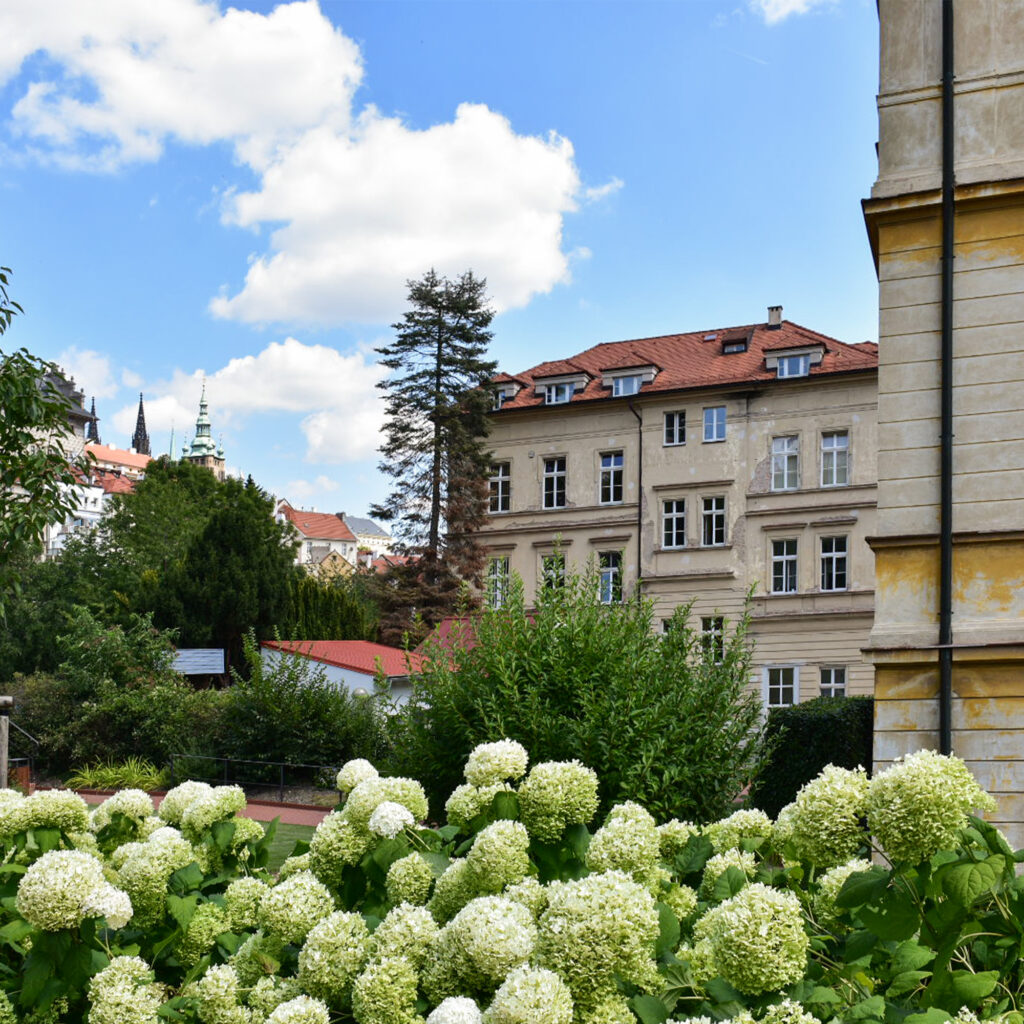
St. Joseph’s Therapeutic Garden
True tranquillity for reflection can be found by those who visit the gardens beneath Petřín Hill, just a few minutes from Prague Castle. The history of the hospital complex dates back to 1842, when the Order of the Sisters of Mercy purchased a house among the vineyards of the Strahov Premonstratensians, which later became the foundation for the future hospital. Over time, the hospital expanded to include additional wings, the Church of St. Charles Borromeo, and surrounding grounds that also began serving patients.
After the coup in 1948, the sisters were expelled by the hospital’s communist leadership, and the complex deteriorated significantly in the following years. Better times began to dawn after the turn of the millennium. In September 2022, the hospital garden underwent restoration and revitalization. New paved pathways, four new water features, and countless decorative plants and cut flowers for decorating the church were added.
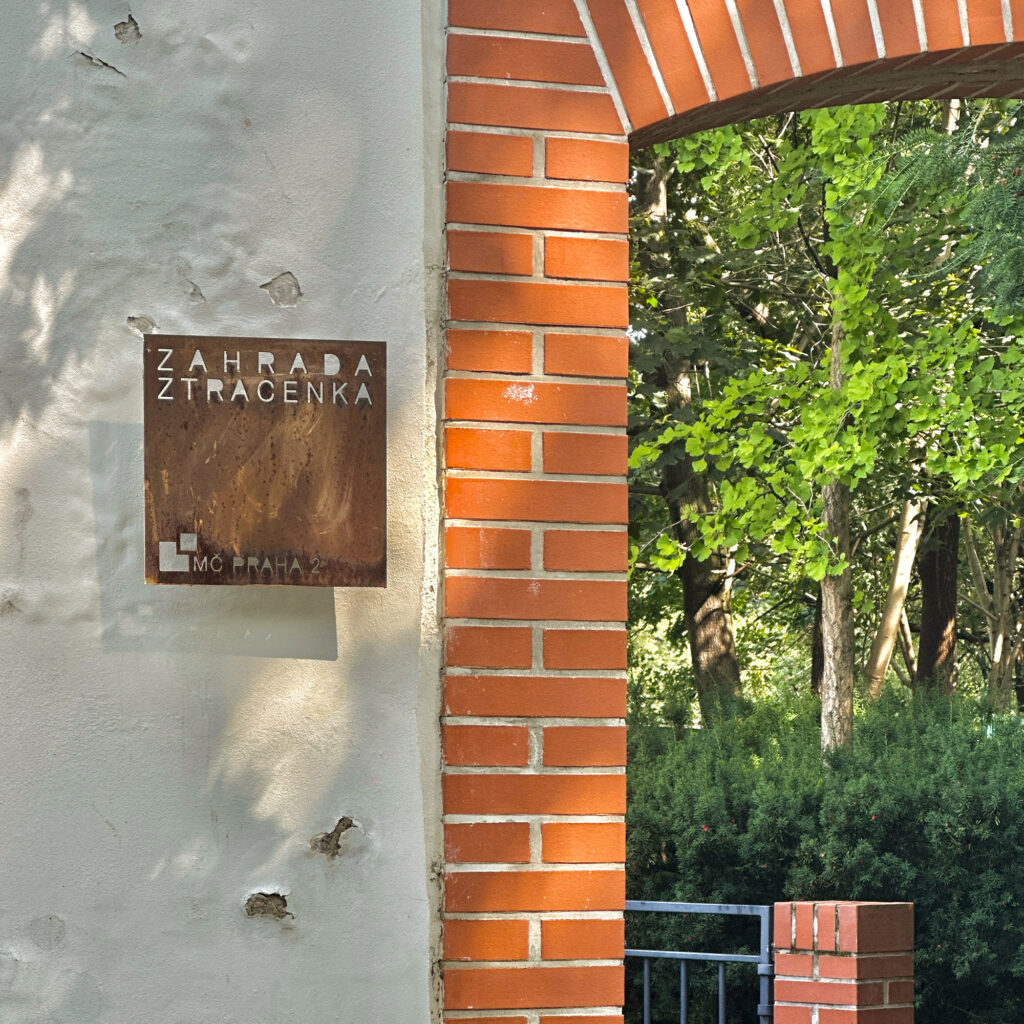
Ztracenka Park
Once a neglected and overgrown area, today, with the elegance of Italian gardens, this location brings a smile to every visitor’s face. Ztracenka Park has truly lived up to its name for much of its history. The original vineyards beneath Karlov disappeared during the Thirty Years’ War, after which the place was transformed into city gardens, still very impenetrable. During socialism, Ztracenka was used as a playground. Still, over time, it fell back into neglect, turning into an unkempt slope full of lush vegetation and becoming a common refuge for the homeless.
In 2010, the park underwent extensive reconstruction under the guidance of architect Michal Gavlas, transforming it beyond recognition. Today, the garden features several terraces with viewpoints. One of these terraces is home to the Memorial to the Victims of Two Totalitarian Regimes, composed of three stone blocks created by artists Ondřej Tuček and Ladislav Sorokáč. The ubiquitous brick walls surrounding the benches are inspired by nearby New Town bastions and connect in many places to historic masonry.
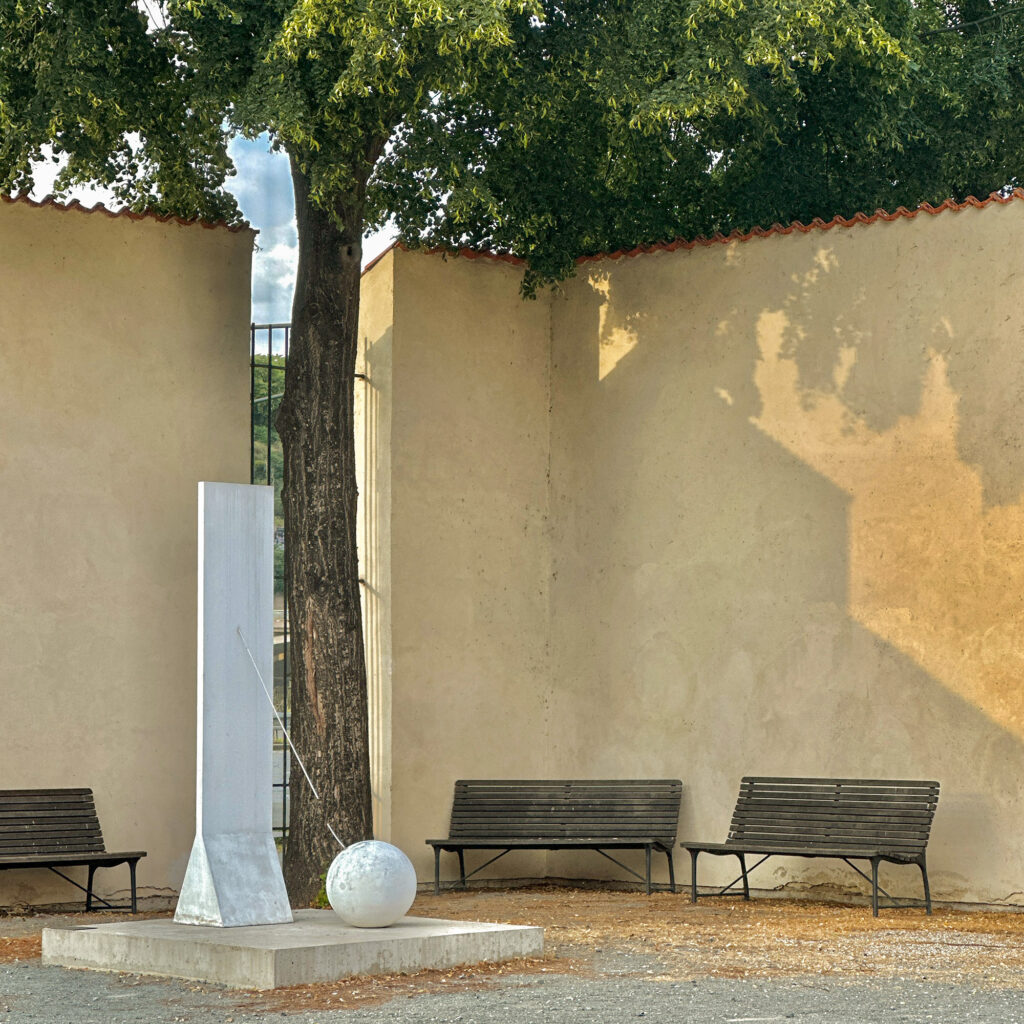
Gardens of the St. Agnes Convent
The extraordinarily valuable medieval complex of the Convent of St. Agnes has been a hidden place away from the eyes of ordinary city dwellers since its establishment in the 13th century. Named after its founder, Agnes of Bohemia, the convent preserved spirituality for centuries behind its walls. It guarded royal relics as well as the secrets of monastic life. A breakthrough occurred in the 1960s when the entire complex was entrusted to the National Gallery in Prague. The NGP gradually began to open the intricate area filled with hidden gardens, dark corners, and small courtyards, except for the gardens, which suffered significant damage during the floods of 2002 and had to wait until 2016 for their reopening.

Garden of the First Republic – The Living Garden of Views
The National Agricultural Museum hides not only a rich interior full of educational materials but also two outdoor exhibitions. The first, the Garden of the First Republic, is located directly in front of the museum building on Letohradská Street. This space is inspired by First Republic architecture and features a gazebo, garden benches, and meticulously maintained flower beds. A historic carousel with animal motifs and free-roaming Guinea fowl further enhances the atmosphere. The garden was created to commemorate the republic’s centenary, and the project is based on scientific research exploring the works of prominent Czech landscape architects.
The second outdoor exhibition is not found in front of the building but on its roof. The Living Garden of Views is situated atop the museum and is thematically divided into several sections. Whether you are interested in growing agricultural plants, life inside a beehive, or simply enjoying new perspectives of the Prague skyline, the National Agricultural Museum roof will surely be a success.

Feminist route
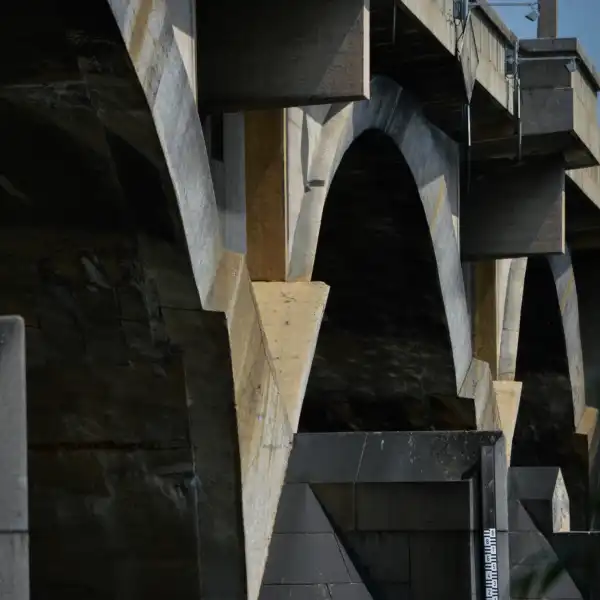
Bridge Route
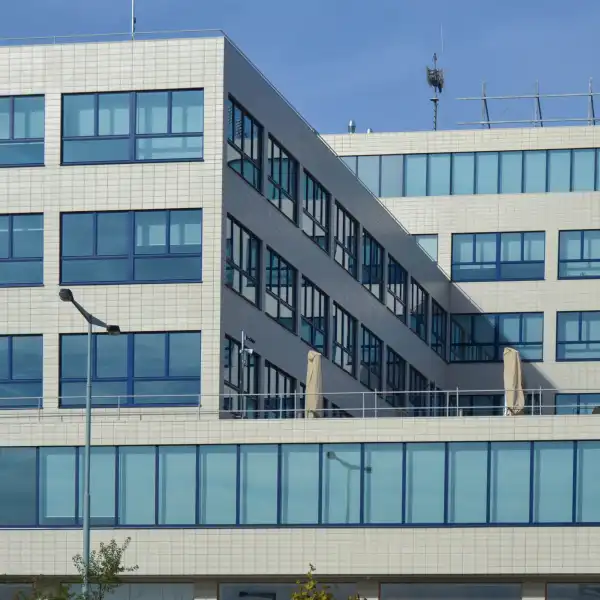
Functionalist Route

Passage Route
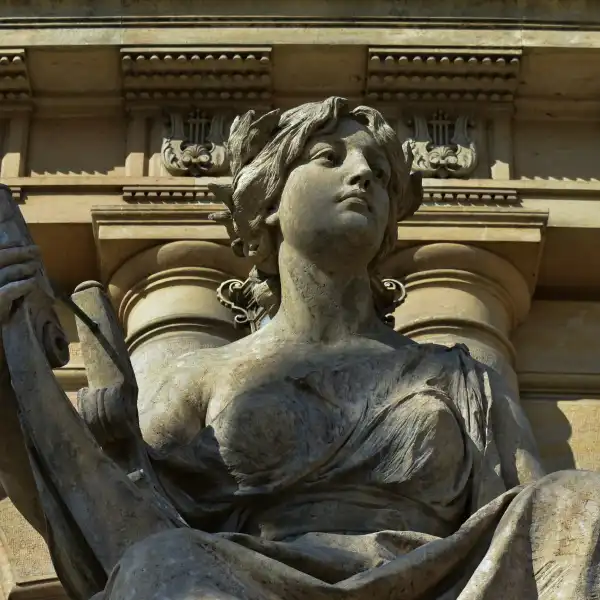
Music Route

Church Route (1930s)

Prager’s Route
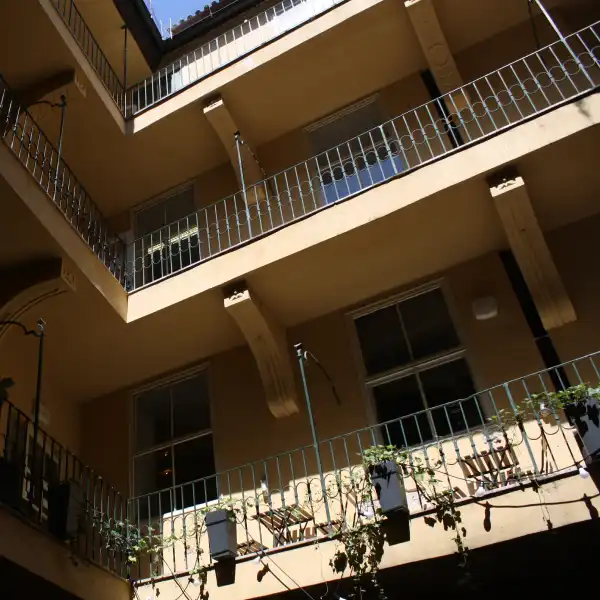
Inner Courtyard Route

Glass Route

Empty Route

Literary Route

Brutalist route
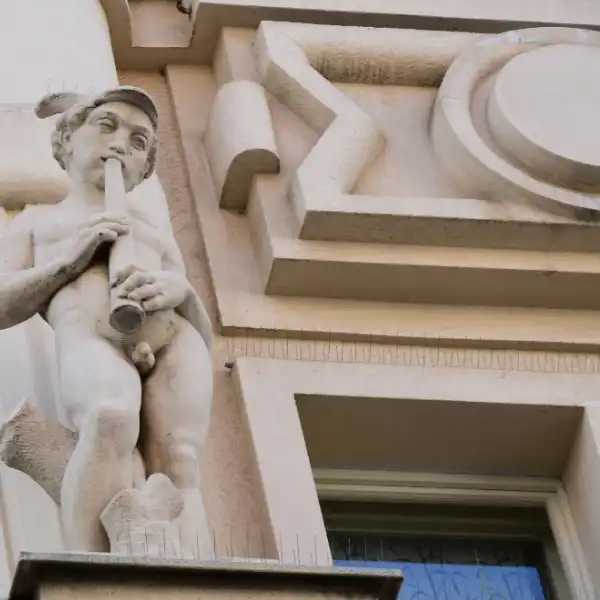
Rondocubist route
